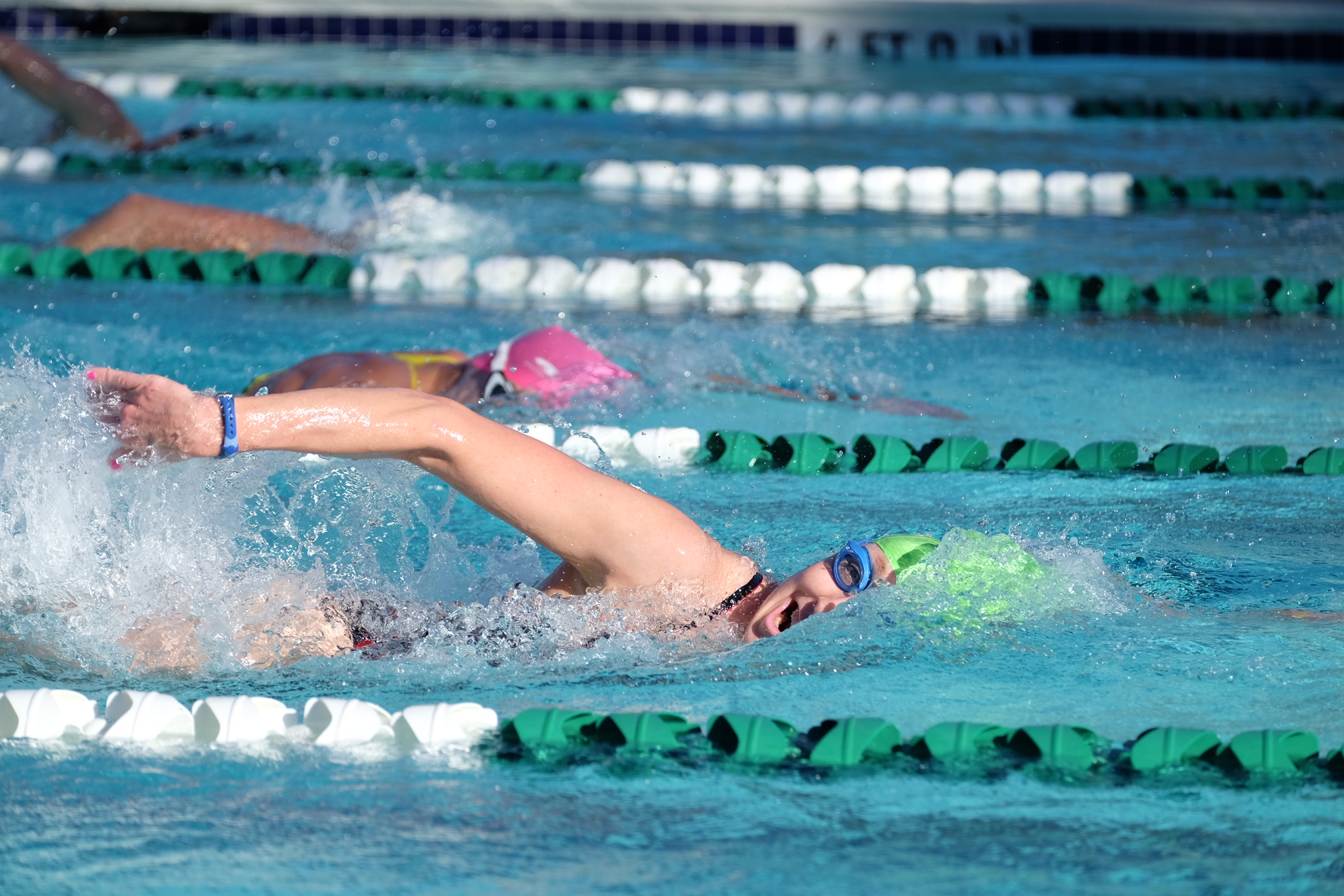
06 Apr Magnolia Master’s Swim Training Camp: 5 Tips to improve your Swim Time
Swimming has been my weakest link since I started triathlons. I swam in a summer league growing up, but that was my only formal swimming experience. Beyond that, I enjoyed informal sessions with my family and even a few two-a-days, all in a relaxed, noncompetitive setting.
Recently, in my continuing efforts to improve my swimming abilities and results, I decided to attend one of Tim Floyd’s swimming camps. A couple weeks prior to driving down to the swim camp, I pulled an intercostal and oblique on my left side which kept me dry for 1.5 weeks. I was scared jumping into two-a-days with high intensity, but, as I learned, sometimes your body can cope with much more than you think it can.
Tim Floyd puts this camp on every year for 3-4 weeks in January. He is an amazing swim coach and the improvements his athletes show speak to his knowledge and abilities as a coach. I was fortunate enough to meet Tim in September during a camp he was doing for some pros then building up for the IM World Championships. I saw the value of his on-deck corrective coaching and knew I had to come down in January and experience it for myself.
The workouts are all outlined on his blog. If you are wondering about all the crazy workouts we did, go ahead and have a look. He also writes a lot about technique that even seasoned swimmers will find helpful.
We had two workouts on Monday, Tuesday, Thursday and Friday and single workouts on the rest of the days. I also had intense bike and run sessions on top of all the swimming. It’s always important to keep properly fueled, yet it was super hard with the busy schedule we had to keep. Swim from 7:00-8:30, bike or run around 10:00/11:00, and then swim again at 3:00 pm. This training regimen left little time to be able to get proper meals in without having issues with the next workout. For breakfast I had 2 muffins and then to keep me going during the 1.5-hour swim in the morning, I consumed a bottle of XRCEL Athlete Fuel 15 minutes before entering the water. Afterwards, I would return home and then have oatmeal with some eggs. With my bike or run completed it was time to replenish again. Depending on the time, I would have a banana with almond butter and a granola bar or more of a “real” meal. After the final swim I’d have a snack and then head off to find dinner. Proper nutrition and fueling was critical to my success at camp and I found it really helped me take advantage of all that I was learning and applying. Adding XRCEL to my training and competition has allowed me to take advantage of the benefits of extended release fuel – refueling less, enduring less stomach volume & GI distress, and ultimately reducing peaks and valleys in my performance. Tim added the finishing touches with his training routines and specific pointers.
Following are the top 5 recommendations Tim changed in my swimming that resulted in me dropping from 1:12 to 1:07 on 1:30 100 yd repeats as well as drop my hold pace 25yd repeats from 15 to 13/14.
1. Keep your arms wider, don’t cross over
2. Finish the stroke all the way through
3. Don’t chop the stroke short in the front, reach long
4. Hips up (bum up), head down
5. Time in the pool, feel of the water
Jocelyn McCauley – Pro Triathlete







No Comments